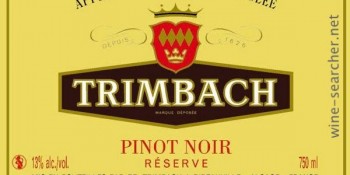There’s probably no other wine that has benefited from pop culture more than Pinot Noir. Rex Pickett’s buddy comedy novel Sideways and the Alexander Payne movie
it inspired had a significant impact on Pinot Noir sales in North America and on wine consumption in general.
For those who haven’t seen the movie or read the book, Sideways is the story of two friends, Miles and Jack, played in the film brilliantly by Paul Giamatti and Thomas Haden Church, traveling through the Santa Ynez Valley for “one last hurrah” before Jack gets married. The story ends up as a modern-day comedy of errors, focusing on the clash between Miles, who is focused on tasting wine and relaxing, and Jack, who would prefer to be flirting, womanizing, and having a fling or two before his wedding.
Miles, who is a serious wine aficionado, teaches Jack about wine along the way, and we learn about his obsession with Pinot Noir: “It’s thin-skinned, temperamental, ripens early. It’s, you know, it’s not a survivor like Cabernet, which can just grow anywhere and thrive even when it’s neglected. No, Pinot needs constant care and attention, you know? And in fact it can only grow in these really specific, little, tucked away corners of the world. And, and only the most patient and nurturing of growers can do it, really. Only somebody who really takes the time to understand Pinot’s potential can then coax it into its fullest expression. Then, I mean, oh its flavors, they’re just the most haunting and brilliant and thrilling and subtle and ancient on the planet.” The movie was a hit at domestic box offices, and in the few years following the film’s release, Pinot Noir sales saw significant increases.
We also learn in the film of Miles’ distaste for Merlot, as at one point he screams: “If anyone orders Merlot, I am leaving. I am not drinking f***ing Merlot!” This, too, altered U.S. wine sales: there was a noticeable decline in Merlot sales after the film’s release. The increased popularity of Pinot Noir, along with the decrease in Merlot, was dubbed “The Sideways Effect” by many in the wine industry. In more recent years, the effect has leveled off, with Merlot regaining the ground it had lost.
Ironically, Merlot and Pinot Noir are two wines that are commonly suggested for novice wine drinkers to try. They are both typically low in tannins, which cause a bitter, cotton-mouth sensation — a quality commonly disliked by those trying red wine for the first time. Both wines are also typically fruit-forward, meaning the flavors that stand out the most are fruit characteristics, like cherries in Pinot Noir and dark berries and plum in Merlot. Yet Miles is enraptured by the former and detests the latter.
Pinot Noir has an interesting status in the wine world. Serious winos sometimes say that you “graduate” to Pinot Noir from other, less sophisticated red wines. How can Pinot Noir be a good wine for novice drinkers but also be the prized wine of wine snobs?
The answer has to do with the less obvious flavors, the subtleties and nuances that an experienced palate can detect. While the typical tastes of Pinot are easy for inexperienced wine drinkers to enjoy, it’s the flavors that you find when you get past the obvious that truly fascinate winos. Pinot Noir is usually not powerful like Cabernet Sauvignon and is typically never a “fruit bomb” like an Aussie Shiraz. It is light- or, at most, medium-bodied and has delicate rather than in-your-face fruit flavors. Cherries, cola, and earthy flavors are most commonly associated with Pinot Noir, but descriptions often also include red fruits like raspberries and cranberries, as well as herbs, spices, caramel, leather, and mushrooms.
The most famous region for Pinot Noir is in Burgundy, France. This also leads to some astonishingly high prices, which is why I’ve chosen to leave Burgundy aside for now. Pinot Noir is also grown in another French region, Alsace, along the border with Germany where acidic white wines otherwise dominate. Trimbach’s Pinot Noir Reserve is a high-quality offering priced reasonably. The nose is beautiful and “outdoorsy” with floral and spice components, along with a forest aroma, like damp leaves in the woods. There are abundant cherry and cranberry flavors on the palate, with a little earthiness and very subtle tannins.
In the United States, California’s cooler growing areas produce some fantastic Pinot Noir, including along the Central Coast and in the Russian River Valley / Sonoma County regions. As with most California wines, the flavors are bigger and bolder than those from France. The 2012 La Crema Pinot Noir from Sonoma is a really solid wine for the price and is a great choice to drink at home or to bring along to a dinner party. It is also widely available, given its place within the Kendall Jackson wine empire. I like the cherry cola component to this wine, along with ripe berries, a hint of coffee, spice, and oak.
In Oregon, Pinot Noir is truly king — and very popular these days, particularly in the Willamette Valley. Most Oregon Pinot is not cheap, however, perhaps due to its high demand. The wines are typically bolder than those from Europe but more delicate than California’s, sometimes with a beautiful tartness. Left Coast Cellars’ 2011 “Cali’s Cuvee” Pinot Noir is an affordable example, with a nose of berries, mint, oak, and a hint of chocolate. The palate has plenty of black cherry, plum, and pomegranate, but the twist is the astringent, fresh-brewed tea on the finish.
You’ll find plenty of Pinot Noir outside these areas, but almost always from temperate or cool climate regions. Excellent bottles are easily found from Germany, Northern Italy, New Zealand, and the Finger Lakes of New York (Ravines and Red Tail Ridge make excellent Old World-style Pinot).
Do you smell and taste the subtleties, deep down, past the bright cherry flavors? Close your eyes, and swirl, sniff, sip.
